Knowing where our food comes from is about slowing down. So let me begin with the fog.
It comes in the night and settles into the mountain. When daylight opens, it lingers to watch. On this autumn morning, the fog is the quiet keeper of the garden, Project Sprout, at the base of Monument Mountain in Great Barrington, Massachusetts.
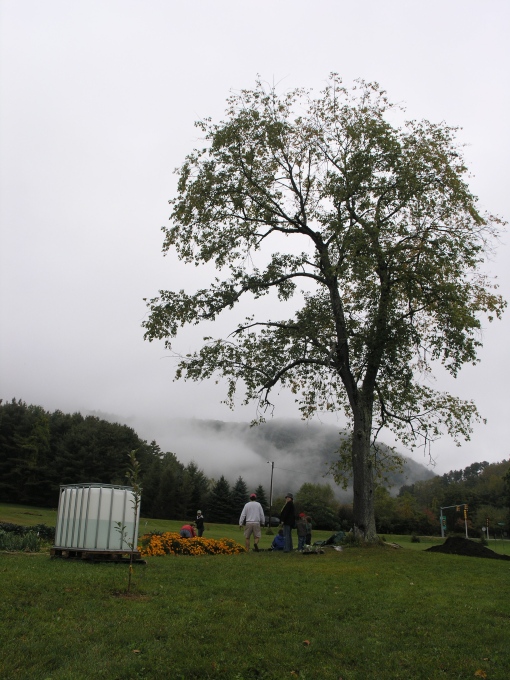
Morning at Project Sprout
The garden was started in the way of many lesser ambitions: high school students talking in the hall between class. Yet one student’s simple observation was the catalyst for something extraordinary.
“I realized that our biology class never went outside in the whole year. It didn’t make sense. And food is our closest connection to the natural world,” said Sam Levin, Class of 2011 at Monument Mountain Regional High School.
Sam, along with two other students, Nathalie Akers and Sarah Steadman, started the garden two years ago as a way to relate to their environment. With the encouragement of Mike Powell, a guidance counselor who also leads the school’s Green Team, they partnered with a local non-profit group, Project Native. Since then, they have gained one part-time staff member, Bridghe McCracken, a landscape designer who specializes in organic gardens, and a team of regular volunteers. Project Sprout now grows fresh produce for the nearby elementary, middle and high schools. At the height of its recent harvest, the garden produced 200 pounds of vegetables each week for the school cafeterias. On average, the garden yields anywhere from 50-100 pounds weekly.
“I would never have expected to do this before. I find it fun coming to the cafeteria knowing that I helped harvest and grow this food. It just boggles my mind. Now I feel sure of what I’m eating,” said garden volunteer Isabel Mitchell, Class of 2012.
Project Sprout is also an outdoor classroom for the middle school gardening class and the high school greenhouse class. The elementary kids make regular visits, too.
“It’s powerful for a young person to watch a seed become food. A kindergartener will try a spicy radish, for example, when they have been a part of growing it. They would have never eaten one before,” said Bridghe, “I think growing food is essential to understanding our place in the world.”
On the day I visited, the volunteers were planting leeks and arugula, among other things, to be harvested in February. As the winter comes in, they will protect the garden with a moveable hoop house. Every aspect of the garden–organic planting and rain water irrigation, for example–contributes to its mission of environmentally-conscious living. “We’re beyond carbon neutral,” explained Bridghe with a chuckle.
Now the team is armed with a 10-year plan; in six years, this will include fruit from their newly-planted apple tree orchard. The students of Project Sprout will do it all: plantings, fund-raising events, field harvesting at 6:45 am, and more.
“What means the most to me is that it’s student run. People think we just sit around and play video games all day,” said Sam.
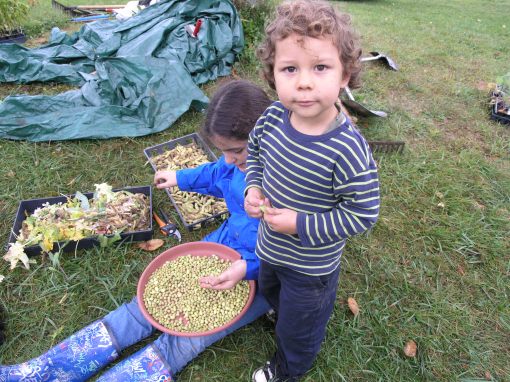
Shelling Soybeans & Learning Early
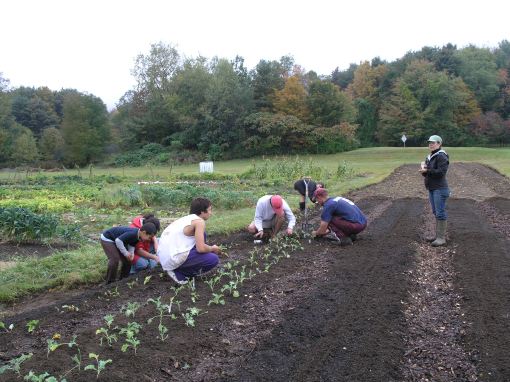
Planting for Winter Harvest
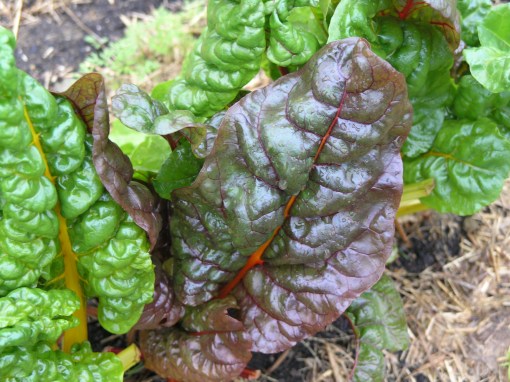
Rainbow Chard Ready To Go
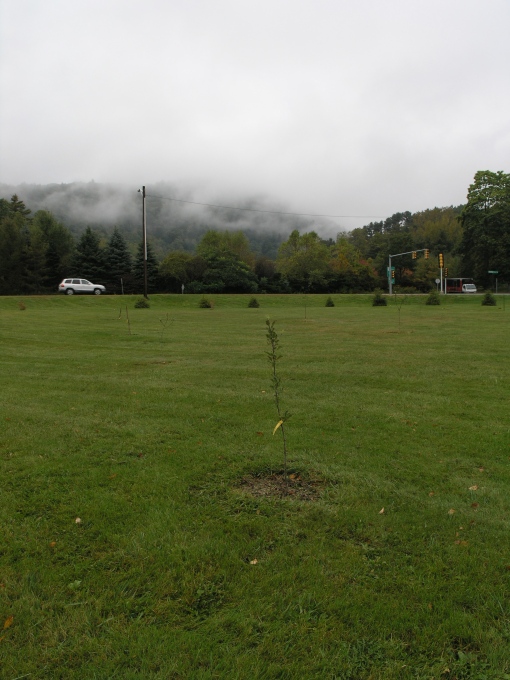
These Apple Trees Will Have Fruit for the Class of 2015
